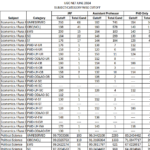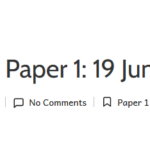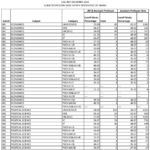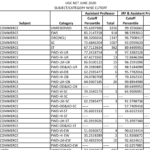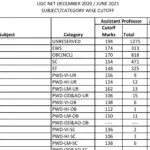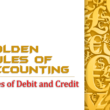Here you can see some Glossary of Account which is frequently used in account like following and that meaning:
A
Accommodation Bill: A bill of exchange drawn and accepted for mutual help.
Accountancy: The knowledge of how to do accounting.
Accounting: An information system that provides the accounting information to users thereof to arrive at the correct decision.
Accounting Information System (AIS): A system within the software that performs accounting applications.
Amortisation: Refers to writing off the proportionate value of the intangibles, e.g. goodwill, copyright, patents, etc.
Application Software: Program to perform specialised functions such as accounting.
Accounts from Incomplete Records or Single-Entry System is a system in which accounting records are not kept according to double entry principles of book keeping.
Attributes: Properties that characterises or describes an entity.
Basic Accounting Terms
B
Balance Sheet: A statement of assets and liabilities of a firm as at a certain date.
Bank Reconciliation Statement: A statement prepared on a particular date to reconcile the bank balance in Cash Book with the balance as per the bank Pass Book, showing the causes or reasons of difference, if any, between the two.
Bill of Exchange: An instrument in writing containing an unconditional order to pay a certain sum of money to somebody.
Book Keeping: Art of recording in the books of accounts the monetary aspect of commercial or financial transactions.
Also See this:
- UGC-NET June 2025 Cut-off marks & Final Answer Key
- UGC-NET December 2024 Cut-off marks
- UGC-NET December 2024 Final Answer Key
- UGC NET Official Paper 1: 19 June 2023 Shift 1
- UGC NET JUNE (Re-NET) 2024 Cut Off
C
Capital Expenditure: The amount spent on purchase of fixed assets to be used in the business to earn income and not meant for resale.
Capital Receipts: The amounts received in the form of additional capital introduced, loans received and sale proceeds of fixed assets.
Capital Reserves: Reserves created out of capital profits, not generally available for dividend distribution, e.g., profit prior to incorporation, capital redemption -reserve, etc.
Cash Book: A book maintained to record cash and bank transactions. Cash Book is both a subsidiary and a principal book.
Cash Discount: Discount allowed on prompt payment or payment before a certain date.
Cash Memo: This source document results from cash sales.
Clerical Errors: Errors arising because of mistakes committed in the course of accounting are known as clerical errors. These errors can be classified into:
- Errors of Omission: A transaction completely or partially omitted to be recorded in the books.
- Errors of Commission: An amount wrongly written in the subsidiary book or in the Ledger, or a posting into wrong account or wrong balancing. Some errors affect the Trial Balance and some do not.
- Compensating Errors: Errors such as those the effect of which is nullified by another error.
Computer: It is an electronic machine for making calculations and storing and analyzing information fed into it.
Conservatism: Also known as Prudence. It holds that anticipated profit should not be accounted while anticipated losses should be.
Consistency: It holds that accounting practices once adopted should be followed consistently over the accounting periods.
Contingent Liability: Liability that will arise only on the happening of a certain event. It is shown as a footnote to the Balance Sheet.
Credit Voucher: Credit voucher is prepared when cash is received.
Current Assets: Assets that are kept for resale or for conversion into cash.
Current Liabilities: Liabilities which are payable by the business within one year.
Customised Software: A readymade software that is changed to meet specific user requirement.
D
Data: A meaningful raw fact.
Database Administration: Whether database technology has been successfully developed and implemented in an organization is determined to a great extent by a function termed as database administration, headed by Database Administrator (DBA).
Database: A database is a repository for related collection of data.
Database Administrators (DBA): A database professional who creates and maintain the database and also implements the policies developed.
Database Management Systems: Database Management System (DBMS) is a tool that computers use to achieve the processing and orderly storage of data.
Date of Maturity: The date on which the payment of a bill is due is known as due date or date of maturity. It is calculated by adding 3 additional days to the date determined. These additional days are known as days of grace.
Debit Voucher: Debit voucher is prepared when cash is paid.
Deferred Revenue Expenditure: An expenditure incurred during an accounting period but the benefit arising out of it extends beyond that accounting period, e.g., advertisement expenses, etc.
Depletion: This term is used in respect of the extraction of natural resources that reduces the availability or quantity of the material or asset, e.g., quarries, mines, etc.
Depreciation: It means a fall in the value of an asset because of usage, afflux of time or obsolescence.
Direct Expenses: Expenses which are incurred on the goods purchased till they are brought to the place of business for sale, e.g., carriage inwards, factory lighting, etc.
Dishonour of a Bill: Bill (Acceptance) not being met on the due date.
Donation: It is the amount contributed by the members, supporters and well-wishers of the organisation in the form of cash or kind.
Drawee: The party which accepts the order.
Drawer: The party which makes an order.
E
ER Design: A formal blue print.
Endorsement: Transfer of the received cheque or bill of exchange to another person/party who then becomes entitled to receive the payment.
Entrance Fee (or Admission Fee): It is an initial amount payable at the time of seeking admission by a person who intends to become a member of a club, association or society.
Entity: Economic unit which engages in identifiable economic activities.
Errors of Principle: A transaction recorded in contravention of accounting principles. Such errors do not affect the trial balance.
F
Fictitious Assets: Assets which do not exist in real. No amount can be realized from these assets nor can any benefit be derived. Examples of such assets are: Preliminary Expenses, Discount on Issue of Debentures, Deferred Revenue Expenditure, etc.
Financial Accounting: The accounting system that is concerned only with the financial state of affairs and financial results of operations.
Fixed Assets: Assets that are acquired for continued use and are not meant for resale.
Full Disclosure Principle: It holds that all material and relevant facts concerning financial position and the results of operations are communicated to the users.
G
General Reserve: An amount set aside out of profits and created not for any specific purpose.
Gross Profit: Excess of net sales revenue over cost of goods sold.
Going Concern Assumption: Also known as Continuity Assumption. It holds that business will exist for an indefinite period of time.
H
Holder in Due Course: A person who acquires a bill in good faith for value and before the date of maturity is known as holder in due course.
I
Identifier: A unique number to identify an object.
Impersonal Accounts: Accounts that are not personal, e.g., Machinery Account, Cash Account, etc.
Income and Expenditure Account: An account drawn by a Not-For-Profit Organisation. It is similar to Profit and Loss Account drawn by a commercial enterprise.
Input Unit: Refers to the parts of a computer, e.g., keyboard, floppy diskette, scanner, etc., which accept instructions and data to be processed from the user.
Invoice or Bill: A source document which results from credit sales.
J
Journal: A primary book of accounts in which transactions are originally recorded in a chronological order. It is the book of original entry.
L
Ledger: A book which contains accounts. It is the most important book of accounts and is called the Principal Book.
Legacy: It is an amount or other item of value received from a deceased person under the terms of a will.
M
Maker: The person who makes the note and promises to pay the amount.
Materiality: It is the modified or exception principle of accountings This principle emphasizes that all material information should be disclosed. Material information can be an amount which is significant or an event which can influence the decision of the user of accounting information.
Money Measurement Assumption: It holds that only those transactions and events are recorded which can be measured in monetary terms.
MS Access: A database software for creating, storing and managing database management system.
N
Net Profit: Excess of revenue over expenses and losses. In other words, it is deduction of operating expenses from operating and non-operating profit.
Nominal Accounts: Also known as Revenue/Expense Accounts. These relate to expenses, losses, gains, revenues, etc. Examples are Salary Account, Commission Received Account, etc.
Normalization: It is the process of refining the data model built by the Entity-Relationship. It groups the data over a number of tables with minimum redundancy of data.
Not-For-Profit Organisation: An organisation established with an objective of welfare to the society and not for earning profit.
O
Obsolescence: It refers to decrease in usefulness caused on account of the asset becoming out of date, old fashioned, etc.
One-sided Error: The errors that affect only one of the accounts involved.
Operating Profit: It is the excess of gross profit over operating expenses.
Operating System: A set of specialised programs that means necessary interface between the user and hardware.
Output Unit: Refers to that part of the computer which provides the final results to the end users. Examples are visual display unit, printer, etc.
P
Payee: The party to whom the amount is to be paid.
Pay-in-Slip: This source document relates to the deposit of cash or cheque with the bank.
Personal Accounts: Accounts that relate to persons, debtors or creditors.
Profit and Loss Account: A part of financial statements prepared to ascertain net profit or loss during a given accounting year.
Promissory Note: An instrument in writing containing an unconditional undertaking to pay certain sum of money.
Provision: An estimated amount to meet a loss or expense in future whose amount is uncertain. It is a charge on profit.
P
Purchases Book: Also known as Purchase Journal. It records the credit purchases of goods dealt in or of materials and stores used in a factory.
R
Readymade Software: A software that is not developed for a specific user and is available off-the-shelf.
Real Accounts: Accounts that relate to the assets of the firm, excluding debtors, e.g., land, fixed deposits, cash in hand, bank accounts, etc.
Receipts and Payments Account: It is prepared by a Not-For-Profit Organisation It is a summary of receipts and payments under different heads during a period. It begins with opening cash and bank balance and ends with closing cash and bank balances.
Refinement: A completion of normalisation process.
Relational Database Management System (RDBMS): In RDBMS, the data structure or relationship between data is defined in logical rather than physical terms.
Reality: A real world situation.
Renewal of Bill: The process whereby an old bill is cancelled and a new bill is drawn and accepted by the drawee.
Reserve Fund: Reserves invested in outside securities and earmarked for the particular purpose denoted by the reserve.
Reserves: Amounts set aside out of profits. These are an appropriation of profits or accumulated profits.
Revenue Expenditure: The amount spent on the running of a business.
Revenue Receipts: The amounts received in the normal and regular course of business mainly by sale of goods and services.
Revenue Reserves: Reserves created out of revenue profits and made available for dividend distribution, e.g., general reserve, debenture redemption reserve, etc.
S
Sales Book: It records the credit sales of goods dealt in by the firm.
Secret Reserve: A Secret Reserve is a reserve the existence and/or the amount of which is not disclosed in the Balance Sheet.
Source Document: It is an evidence in support of a transaction. It is also called supporting document or voucher and is the first record prepared for a business transaction.
Specific Reserve: Reserve created for a specific purpose and. which is used for that purpose only, e.g., dividend equalization reserve, development rebate reserve, etc.
Statement of Affairs is just like a Balance Sheet. Assets are shown on the right-hand side and liabilities are shown on the left-hand side.
Straight Line Method: Under this method, a fixed percentage of original cost is written off every year. It is also known as Fixed Percentage on Original Cost Method and Fixed instalment Method. The formula is as follows:
Cost — Estimated scrap value/Number of years of expected life
Subscriptions: It is the amount paid by the members of the Not-For-Profit Organisation periodically so that their membership remains alive. It is a source of income of the Not-For-Profit Organisation.
Suspense Account: It is an account to which the difference in the Trial Balance is put temporarily.
T
Tailor-made Software: A software developed for a specific user.
Tenor or Tenure of Bills: The period between the date on which a bill is drawn and that on which it becomes due.
The Accounting Entity Assumption: It holds that an entity is separate and distinct from its owners. It is applicable to all types of business.
The Accounting Period Assumption: For reporting purposes, the entire life of a firm is divided into time-intervals. In accounting, these intervals are known as Accounting Periods, Usually, it is one year.
The Cost Principle: It holds that expenses be recognized when assets or services have been used to produce revenue during a period and not when cash is paid.
The Dual Aspect Principle: It holds that every transaction has a two-sided or double effect, i.e., debit and credit.
The Matching Principle: The principle provides the guidelines to match expense with revenue. For this, first the revenue should be recognized, and then costs associated with these revenues should be recognized.
The Revenue Principle: Also known as Realisation Principle. It holds that revenue is on the date when a transaction has been entered into and not when cash has been received.
Trade Bill: A bill of exchange drawn and accepted for a trade transaction.
Trade Discount: Discount which is •allowed when a customer purchases goods above a certain quantity or certain price.
Trading Account: A part of financial statements prepared to ascertain gross profit of loss during an accounting year.
Transaction: A financial happening that affects the financial position of the busine. It may be a cash or a credit transaction.
Trial Balance: A statement prepared to show separately the debit and credit balances in each account.
Two-sided Errors: The errors that affect both the accounts involved.
U
Utility Programs: A set of programs used to perform supporting operations.
V
Vertical Presentation of Financial Statement: It is a system of presentation of information in trading, profit and loss account and balance sheet in which items relating to income or gains and expenses or losses and assets and liabilities are placed one after another.
W
Written Down Value Method: Under this method, depreciation is charged at fixed rate on the reducing balance, i.e., cost less depreciation.


